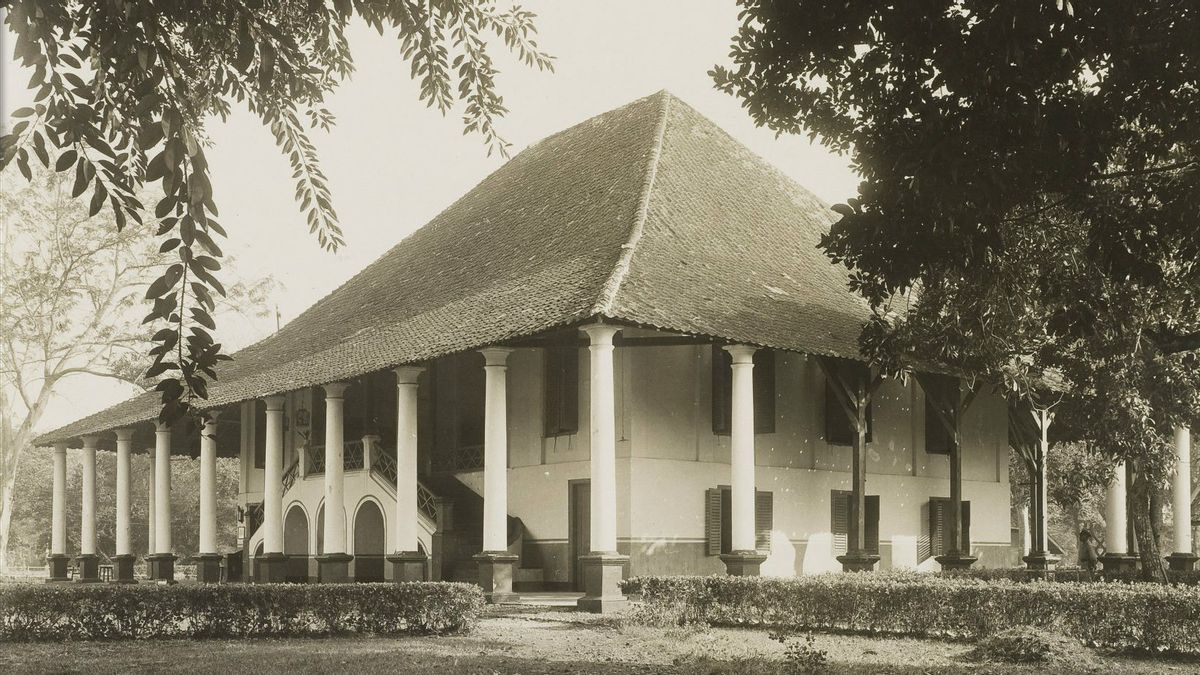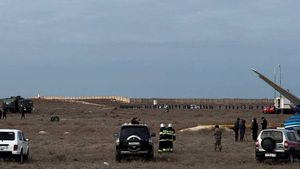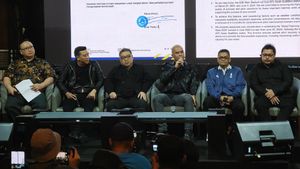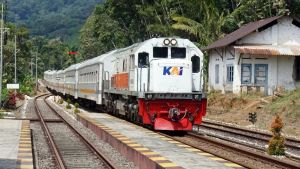JAKARTA - How do you see Cililitan today? Full of buildings, the presence of PGC, the Kramat Jati market, and crumpled by vehicle and human traffic? You will get a different impression if you ask this question to people living in colonial times.
Cililitan in the past is a complete package of a beautiful picture of life with shady trees that fill the area that crosses the river. In fact, at that time, Cililitan was known as an area filled with landhuis, namely a resting place like a villa in the Dutch era.
The beauty of Cililitan before the Cililitan Wholesale Center (PGC), Cililitan Terminal or hotels that grow throughout the area is illustrated in the book The Origin of Place Names in Jakarta by Rachmat Ruchiat. In the book, it is revealed that the name Cililitan is taken from the name of a tributary of the Ci Pinang river. The river, which is now without a trace, was buried by the Jagorawi toll road construction project, which is the first toll road in Indonesia.
"The word Ci comes from the Sundanese language, which means river. Flea coils is the name of a kind of shrub whose Latin name is Pipturus velutinus Wedd - including the Urticeae family. And it happens that this plant has grown a lot along the river so that the area is called Cililitan, "wrote Ruchiat.
If investigated, in the 17th century, Cililitan, which stretched from the west of Ciliwung to the eastern Cipinang, was the private land of Tanjoeng Oost - the eastern part of Jakarta - when it was still under the ownership of Pieter Van Den Velde. He was the person who held the land in the Cawang area - reaching Cililitan - at that time.
Interestingly, in the 17th to 18th centuries, Batavia began to gain a sense of security by developing the plantation area outside the Batavia Fortress City - now known as the Kota Tua area. This story was written by Jean Gelman Taylor in the book Social Life in Batavia.
In line with that, landhuis or rest houses began to be built outside the fort. This includes the construction of one of the surviving landhuis, Landhuis Tjililitan. This vacation home was built in 1775 by Hendrik Laurens van der Crap, a wealthy Dutchman in Batavia.
At that time, the construction of landhuises, including Landhuis Tjililitan, was intended as a vacation spot to enjoy the fresh air on weekends with family. Thus, Jean observes, "it was only in the 18th century that the upper classes spent every few weeks in the countryside and did retired employees reside permanently in country villas."
The mushrooming of landhuis
There was a reason why landhuis was built everywhere at that time. First, because Banten and Batavia had signed an agreement in 1684. This agreement contained peace between the two regions that guaranteed they would not attack each other. Second, due to changes in Batavia's environment which became agricultural land.
As a result, not only Landhuis Tjililitan was present. As revealed by Alwi Shahab via Republika.co.id. In an article entitled Resting Houses in Cililitan, Alwi revealed that many Dutch citizens built resting places in Cililitan, Kramat Jati, West Tanjung, and Cijantung to calm down from the crowded center of Batavia.
The description of Batavia's cramped condition was quoted by Thomas Stamford Raffles in his book The History of Java. He quoted Adam Smith's opinion. "(Batavia's) strategic location made these two colonies the center of their government despite the fact that Batavia's climate was perhaps the worst in the world."
After experiencing changing landowners, in the 1920s, part of Cililitan's land was turned into an airport. When it was first built, the local community called it Bulak Kapal. In fact, the Dutch often referred to the Airfield as Vliegleg Tjililitan.
Gradually, after independence, Cililitan Airfield was converted into Halim Perdana Kusuma Airfield to commemorate Abdul Halim Perdana Kusuma's services in the struggle to defend independence.
Cililitan and all its problems
Then, what about Cililitan today? GJ Nawi, in his book Maen Pukul Pencak Silat Khas Betawi explains, "Cililitan is a village. The name of the village is now at the level of a sub-district under Kramat Jati Subdistrict, East Jakarta. Cililitan Village is the result of the division of Cawang Village based on the Decree of the Governor of DKI Jakarta Number 1251 years. 1986. "
So that Cililitan has territorial boundaries. For example, Kampung Makassar and Condet which are on the southern boundary. Then, the Cawang area, which is the northern boundary. The western boundary is marked on Jalan Dewi Sartika, and Jalan Raya Bogor which is the eastern boundary.
Another interesting fact is that Cililitan is not only known as a wholesale center. Their position next to Kramat Jati makes them the center of the vegetable and fruit trade, which mutually support the needs of the citizens of Jakarta.
The problem in Cililitan is now clearly no longer about how this area becomes a place to relieve fatigue - as in the 18th century. More than that. Various problems arise from development for development that is not environmentally sound. Instead of increasing welfare, the people must bear the burden of environmental damage.
Development causes a variety of new problems, ranging from air pollution due to the erosion of green open spaces, pollution to river basins (DAS) which must accept the burden due to its conversion to a commercial area and business center. Not only that. Floods are also a scourge that haunts Jakarta residents every year due to uncontrolled development.
The Provincial Government (Pemprov) of DKI Jakarta is not ignorant. Governor Anies Baswedan, during his campaign period, mentioned Cililitan's history as the oldest economic axis in Indonesia. Anies even promised to restore the glory by rebuilding the Cililitan nuance in the 17th century.
Hopefully, the State will not "return" to its promises, and begin to think about one by one solutions to the problems facing the capital city of Jakarta. Moreover, air pollution is getting worse. The environment is now also no longer able to support the capacity of life in the Capital City.
Now, while looking for various technical solutions to the problems of the Capital City, it seems important for the government to educate the public to be able to understand the culture and history in which they live. This case is important so that people avoid an identity crisis.
Cililitan, for example. The story is not just about a terminal with a density of pollution or about Halim Perdana Kusuma Airport with its busy life in the sky. Cililitan is more than that. It has a long history and cultural development that shapes the identity of the region and its people.
The English, Chinese, Japanese, Arabic, and French versions are automatically generated by the AI. So there may still be inaccuracies in translating, please always see Indonesian as our main language. (system supported by DigitalSiber.id)










